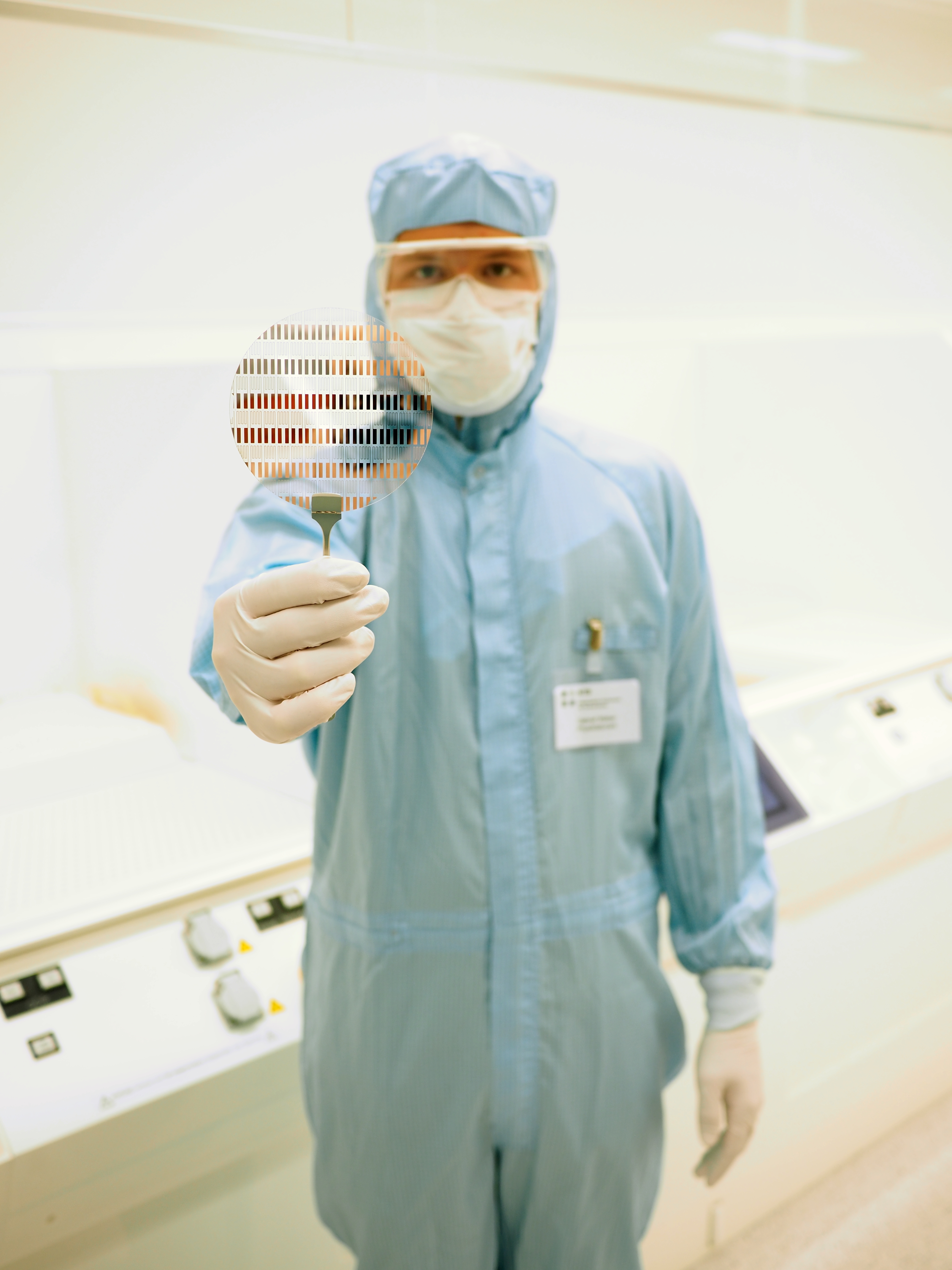The aim of thin film technology is the fabrication of thin layers that influence the physical properties and surfaces of selected materials, specifically adapted to the desired applications.
In many cases, thin films, ranging from a few nanometers to several micrometers, or structures fabricated from them accomplish significant tasks within a microsystem. The coatings properties depend strongly on the chosen coating method and process parameters. As coating processes often take place outside the thermodynamic equilibrium, the properties of thin films can differ signigicantly from the behavior of the bulk material.
Numerous applications
Film thickness, morphology, electrical conductance, refractive index, surface roughness, chemical resistance and pinhole density are among the most important thin film characteristics. These properties also result in a wide range of possible applications as for example:
- Electrodes and traces
- Diffusion barriers and adhesion layers
- Optical coatings (filters, mirrors, ...)
- Decorative thin films
- Electrical insulation, passivation and surface protection
- Masking and etch-stop layers for patterning (wet and dry etching)
- Seed layer for electroplating
- Anti-friction coating (graphene)

Flexibility through various technologies
Versatile technologies and comprehensive equipment enable the development of the optimal coating process under the given boundary conditions. For this purpose we have physical (PVD) and chemical (CVD) deposition processes at our disposal. Our infrastructure is managed and run by experienced process engineers and system experts. Our range of services includes:
- Coating materials: metals, insulators (e.g. Au, Sn, Al, Si, Pt, Ti, SiO2, SixNy, SiOxNy, TEOS, ...)
- Tilm thickness: a few nanometers to 500 nm (depending on equipment, thicker films upon request)
- Maximum substrate diameter: 200 mm (depending on equipment)
- Maximum substrate thickness: 2 mm (depending on equipment, thicker substrates upon request)
- Deposition temperatures: room temperature to 1200°C (depending on equipment)

Electroplating
Electroplating
The goal of electroplating (Electro Chemical Deposition, ECD) is the deposition of metal films and structures to fabricate functional films and microstructures with high thickness or high aspect ratios. In microsystems technology, electroplating is most commonly used for packaging technologies including bonding layers and for UV-LIGA applications. In UV-LIGA processes, a negative form of the desired structure is patterned on the substrate through photolithography. Subsequently, the openings on the surface are filled with the selected metal (mostly nickel or copper) through the electroplating process. This process allows the fabrication of shims, used as mold inserts for injection molding and hot embossing.

Prof. Dr. Martin Gutsche
IMP Institut für Mikrotechnik und Photonik Professor für Mikrotechnik, Leiter Kompetenzbereich Prozesstechnologie
+41 58 257 34 68 martin.gutsche@ost.ch



